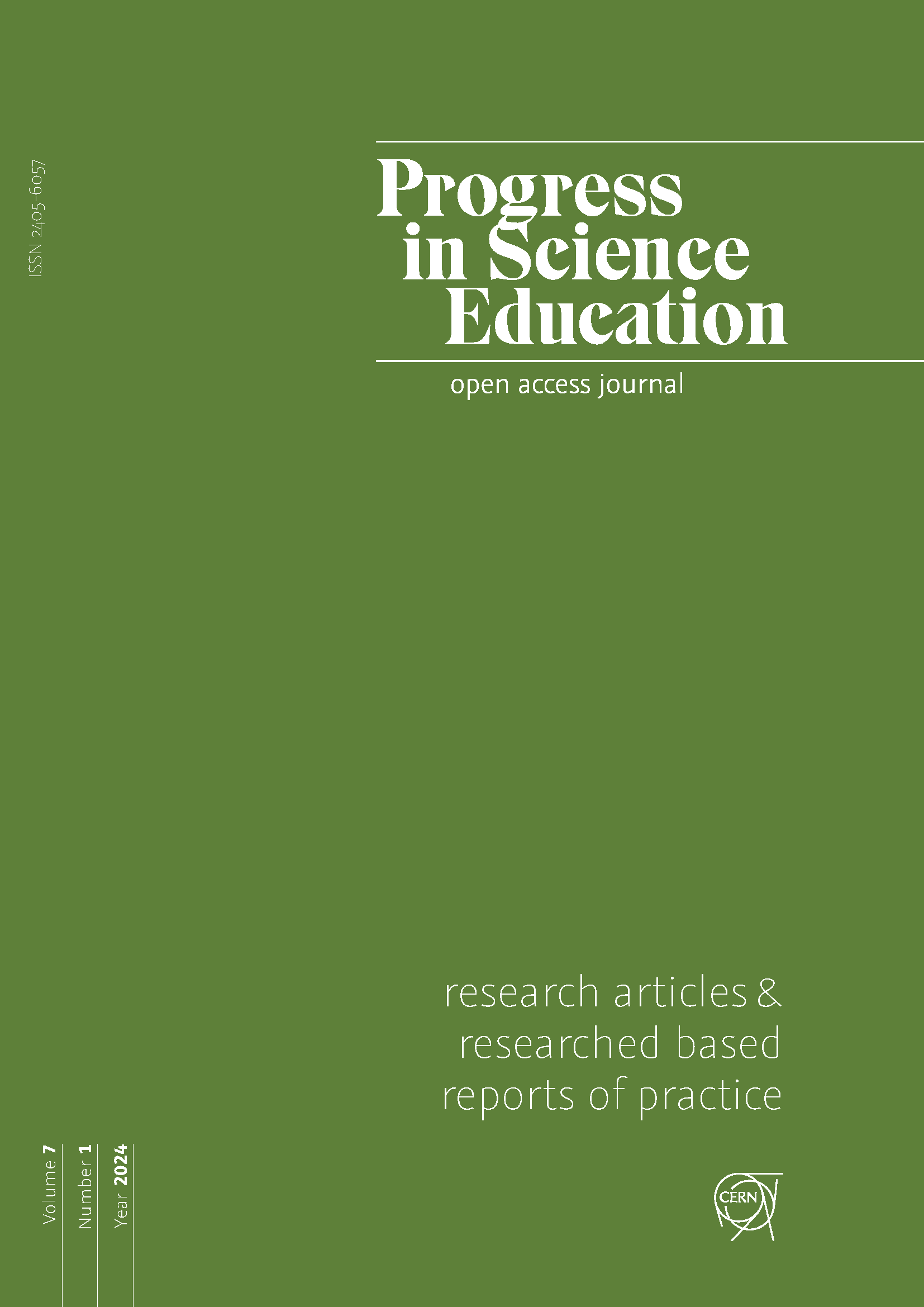‘‘Acids are those dangerous green liquids, and what’s a base?’’
Evaluating upper secondary students’ ‘acceptance’ of a learner-appropriate approach to teaching about acid-base reactions
DOI:
https://doi.org/10.25321/prise.2024.1423Abstract
Background: A central issue in chemistry education is the Johnstone triangle. The complexity of the chemical topic and the learners’ propensity for conflating the levels of the chemical triangle show that using a conceptually coherent model on the submicroscopic level is indispensable for preventing learners from developing inadequate conceptions and helping them connect the macroscopic with submicroscopic properties (Taber, 2013). This is especially true for historically relevant topics such as acid-base chemistry (Häusler, 1987; Krebs & Hofer, 2022; Rychtman, 1979). Nu-merous proposals on how to teach the topic exist (Jiménez-Liso et al., 2020); however, focusing on the compatibility of acid-base reactions to other reaction types in the course of their introduction to learners has received less attention so far.
Purpose: This study aims at evaluating such an approach via a design-based research approach (Gräsel, 2010; Haagen-Schützenhöfer & Hopf, 2020). By delineating key ideas from the Brønsted-Lowry model of acid-base reactions and focussing on the donor-acceptor concept (Barke & Harsch, 2016) and electron transfers (Ghosh & Berg, 2014; Shaffer, 2006; Sieve & Bittorf, 2016), acid-base chemistry can be taught in a conceptually coherent and compatible manner.
Sample/setting: In order to evaluate this approach, 18 learners from several Austrian upper secondary schools (grades 10, 11, and 12) were interviewed using the method of probing acceptance (Jung, 1992) in three separate inter-view rounds. Due to restrictions imposed as a result of the Covid-19 pandemic, these interviews were conducted online using videoconference tools and collaborative word processors.
Design and Methods: In order to design learner-centred teaching materials appropriate for the target group, the learning environment was evaluated cyclically, and after each interview round and data analysis, a re-design followed. As the interview data showed learners’ ‘acceptance’ of the presented learning environment, i.e. their level of agreement with the materials and terms introduced in the interviews, the data was analysed via evaluative text analysis (Kuckartz, 2014), and intercoder agreement assessed in percentual overlap.
Results: The results suggest that the teaching materials and the learning environment developed in the course of the study are received well by the intended target group. In the course of the interview rounds, acceptance increased from satisfactory to mostly successful, thus underlining the potential of the learning environment.
Conclusions: In conclusion, even though this study is very limited due to small sample size (N=18), the continuous effort we made to improve our learning environment according to the participating learners’ offers a basis for larger-scale studies on the matter.
Keywords: design-based research, acid-base chemistry, upper secondary school, method of probing acceptance
Downloads
Published
Issue
Section
License
Copyright (c) 2023 The Author/s

This work is licensed under a Creative Commons Attribution-NonCommercial-ShareAlike 4.0 International License.
Authors who publish with this journal agree to the following terms:
- Authors retain copyright and grant the journal right of first publication with the work simultaneously licensed under a Creative Commons Attribution License that allows others to share the work with an acknowledgement of the work's authorship and initial publication in this journal. The applicable licence is https://creativecommons.org/licenses/by-nc-sa/4.0/, which means
You are free to:
Share — copy and redistribute the material in any medium or format
Adapt — remix, transform, and build upon the material under the following terms:
Attribution: You must give appropriate credit, provide a link to the license, and indicate if changes were made. You may do so in any reasonable manner, but not in any way that suggests the licensor endorses you or your use.
NonCommercial: You may not use the material for commercial purposes.
ShareAlike: If you remix, transform, or build upon the material, you must distribute your contributions under the same license as the original.
Authors are able to enter into separate, additional contractual arrangements for the non-exclusive distribution of the journal's published version of the work (e.g., post it to an institutional repository or publish it in a book), with an acknowledgement of its initial publication in this journal.
Authors are permitted and encouraged to post their work online (e.g., in institutional repositories or on their website) prior to and during the submission process, as it can lead to productive exchanges, as well as earlier and greater citation of published work (see The Effect of Open Access).

